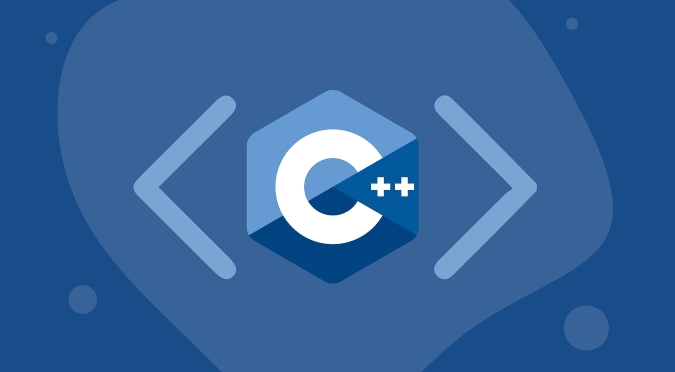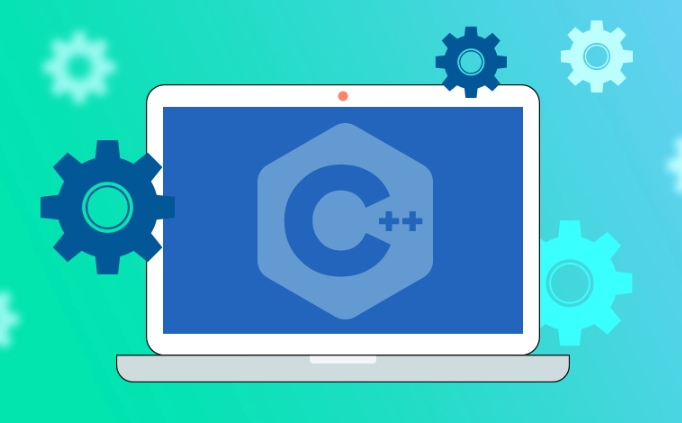Creating a thread pool in C requires manual implementation. 1. The thread pool includes thread arrays, task queues, synchronization mechanisms and control switches; 2. The constructor starts the thread and enters a waiting state, notifies the thread to exit and wait for completion during destruction; 3. Add tasks to the queue through template functions and wakes up the thread to execute; 4. When using it, avoid problems such as uncaught exceptions, long-term blocking, unprocessed dependencies and dangling references.

Creating a thread pool in C is mainly achieved by manually managing a set of threads and providing task queues and scheduling mechanisms. The C 11 standard provides basic components such as <thread></thread> , <mutex></mutex> , <condition_variable></condition_variable> and <functional></functional> , which can be used to build a simple thread pool.

1. Define the basic structure of thread pool
A thread pool usually contains the following core components:
- Thread array : used to store multiple worker threads.
- Task queue : Stores tasks to be executed (usually function objects).
- Synchronization mechanism : includes mutex locks and condition variables to ensure multi-threaded safe access to queues.
- Control switch : For example, the flag of whether to stop the thread pool.
The basic class definition is as follows:

class ThreadPool {
public:
ThreadPool(size_t numThreads);
~ThreadPool();
template<class F>
void enqueue(F&& task);
private:
std::vector<std::thread> workers;
std::queue<std::function<void()>> tasks;
std::mutex queue_mutex;
std::condition_variable condition;
bool stop = false;
};2. Implement construction and destructuring logic
The specified number of threads is started in the constructor, and each thread enters a waiting state until a task arrives.
ThreadPool::ThreadPool(size_t numThreads) {
for (size_t i = 0; i < numThreads; i) {
workers.emplace_back([this] {
while (true) {
std::function<void()> task;
{
std::unique_lock<std::mutex> lock(this->queue_mutex);
this->condition.wait(lock, [this] {
return this->stop || !this->tasks.empty();
});
if (this->stop && this->tasks.empty()) {
return;
}
task = std::move(this->tasks.front());
this->tasks.pop();
}
task();
}
});
}
}In the destructor, all threads are notified to exit and wait for them to complete:

ThreadPool::~ThreadPool() {
{
std::unique_lock<std::mutex> lock(queue_mutex);
stop = true;
}
condition.notify_all();
for (std::thread &worker : workers) {
if (worker.joinable()) {
worker.join();
}
}
}3. Add tasks to thread pool
Use the template function to wrap any callable object into std::function<void()> and add it to the queue:
template<class F>
void ThreadPool::enqueue(F&& task) {
{
std::unique_lock<std::mutex> lock(queue_mutex);
tasks.emplace(std::forward<F>(task));
}
condition.notify_one();
} In this way, you can submit the task through pool.enqueue([]{ ... }); ;.
4. Examples of use and precautions
You can use this thread pool like this:
ThreadPool pool(4);
for (int i = 0; i < 10; i) {
pool.enqueue([i]{
std::cout << "Task " << i << " is running on thread "
<< std::this_thread::get_id() << std::endl;
});
}A few points to note:
- Avoid throwing uncaught exceptions in the task, otherwise it will cause the entire program to crash.
- Do not block in tasks for a long time to avoid affecting the execution of other tasks.
- If there are dependencies between tasks, additional synchronization issues need to be handled.
- Consider using smart pointers or binders to avoid dangling references.
Basically that's it. Although the standard library does not have a built-in thread pool, a lightweight version can be easily implemented with the help of C 11's concurrency tools.
The above is the detailed content of How to create a thread pool in C ?. For more information, please follow other related articles on the PHP Chinese website!

Hot AI Tools

Undress AI Tool
Undress images for free

Undresser.AI Undress
AI-powered app for creating realistic nude photos

AI Clothes Remover
Online AI tool for removing clothes from photos.

Clothoff.io
AI clothes remover

Video Face Swap
Swap faces in any video effortlessly with our completely free AI face swap tool!

Hot Article

Hot Tools

Notepad++7.3.1
Easy-to-use and free code editor

SublimeText3 Chinese version
Chinese version, very easy to use

Zend Studio 13.0.1
Powerful PHP integrated development environment

Dreamweaver CS6
Visual web development tools

SublimeText3 Mac version
God-level code editing software (SublimeText3)

Hot Topics
 Using std::chrono in C
Jul 15, 2025 am 01:30 AM
Using std::chrono in C
Jul 15, 2025 am 01:30 AM
std::chrono is used in C to process time, including obtaining the current time, measuring execution time, operation time point and duration, and formatting analysis time. 1. Use std::chrono::system_clock::now() to obtain the current time, which can be converted into a readable string, but the system clock may not be monotonous; 2. Use std::chrono::steady_clock to measure the execution time to ensure monotony, and convert it into milliseconds, seconds and other units through duration_cast; 3. Time point (time_point) and duration (duration) can be interoperable, but attention should be paid to unit compatibility and clock epoch (epoch)
 What is the volatile keyword in C ?
Jul 04, 2025 am 01:09 AM
What is the volatile keyword in C ?
Jul 04, 2025 am 01:09 AM
volatile tells the compiler that the value of the variable may change at any time, preventing the compiler from optimizing access. 1. Used for hardware registers, signal handlers, or shared variables between threads (but modern C recommends std::atomic). 2. Each access is directly read and write memory instead of cached to registers. 3. It does not provide atomicity or thread safety, and only ensures that the compiler does not optimize read and write. 4. Constantly, the two are sometimes used in combination to represent read-only but externally modifyable variables. 5. It cannot replace mutexes or atomic operations, and excessive use will affect performance.
 How to get a stack trace in C ?
Jul 07, 2025 am 01:41 AM
How to get a stack trace in C ?
Jul 07, 2025 am 01:41 AM
There are mainly the following methods to obtain stack traces in C: 1. Use backtrace and backtrace_symbols functions on Linux platform. By including obtaining the call stack and printing symbol information, the -rdynamic parameter needs to be added when compiling; 2. Use CaptureStackBackTrace function on Windows platform, and you need to link DbgHelp.lib and rely on PDB file to parse the function name; 3. Use third-party libraries such as GoogleBreakpad or Boost.Stacktrace to cross-platform and simplify stack capture operations; 4. In exception handling, combine the above methods to automatically output stack information in catch blocks
 What is a POD (Plain Old Data) type in C ?
Jul 12, 2025 am 02:15 AM
What is a POD (Plain Old Data) type in C ?
Jul 12, 2025 am 02:15 AM
In C, the POD (PlainOldData) type refers to a type with a simple structure and compatible with C language data processing. It needs to meet two conditions: it has ordinary copy semantics, which can be copied by memcpy; it has a standard layout and the memory structure is predictable. Specific requirements include: all non-static members are public, no user-defined constructors or destructors, no virtual functions or base classes, and all non-static members themselves are PODs. For example structPoint{intx;inty;} is POD. Its uses include binary I/O, C interoperability, performance optimization, etc. You can check whether the type is POD through std::is_pod, but it is recommended to use std::is_trivia after C 11.
 How to call Python from C ?
Jul 08, 2025 am 12:40 AM
How to call Python from C ?
Jul 08, 2025 am 12:40 AM
To call Python code in C, you must first initialize the interpreter, and then you can achieve interaction by executing strings, files, or calling specific functions. 1. Initialize the interpreter with Py_Initialize() and close it with Py_Finalize(); 2. Execute string code or PyRun_SimpleFile with PyRun_SimpleFile; 3. Import modules through PyImport_ImportModule, get the function through PyObject_GetAttrString, construct parameters of Py_BuildValue, call the function and process return
 What is function hiding in C ?
Jul 05, 2025 am 01:44 AM
What is function hiding in C ?
Jul 05, 2025 am 01:44 AM
FunctionhidinginC occurswhenaderivedclassdefinesafunctionwiththesamenameasabaseclassfunction,makingthebaseversioninaccessiblethroughthederivedclass.Thishappenswhenthebasefunctionisn’tvirtualorsignaturesdon’tmatchforoverriding,andnousingdeclarationis
 What is a null pointer in C ?
Jul 09, 2025 am 02:38 AM
What is a null pointer in C ?
Jul 09, 2025 am 02:38 AM
AnullpointerinC isaspecialvalueindicatingthatapointerdoesnotpointtoanyvalidmemorylocation,anditisusedtosafelymanageandcheckpointersbeforedereferencing.1.BeforeC 11,0orNULLwasused,butnownullptrispreferredforclarityandtypesafety.2.Usingnullpointershe
 How to pass a function as a parameter in C ?
Jul 12, 2025 am 01:34 AM
How to pass a function as a parameter in C ?
Jul 12, 2025 am 01:34 AM
In C, there are three main ways to pass functions as parameters: using function pointers, std::function and Lambda expressions, and template generics. 1. Function pointers are the most basic method, suitable for simple scenarios or C interface compatible, but poor readability; 2. Std::function combined with Lambda expressions is a recommended method in modern C, supporting a variety of callable objects and being type-safe; 3. Template generic methods are the most flexible, suitable for library code or general logic, but may increase the compilation time and code volume. Lambdas that capture the context must be passed through std::function or template and cannot be converted directly into function pointers.






